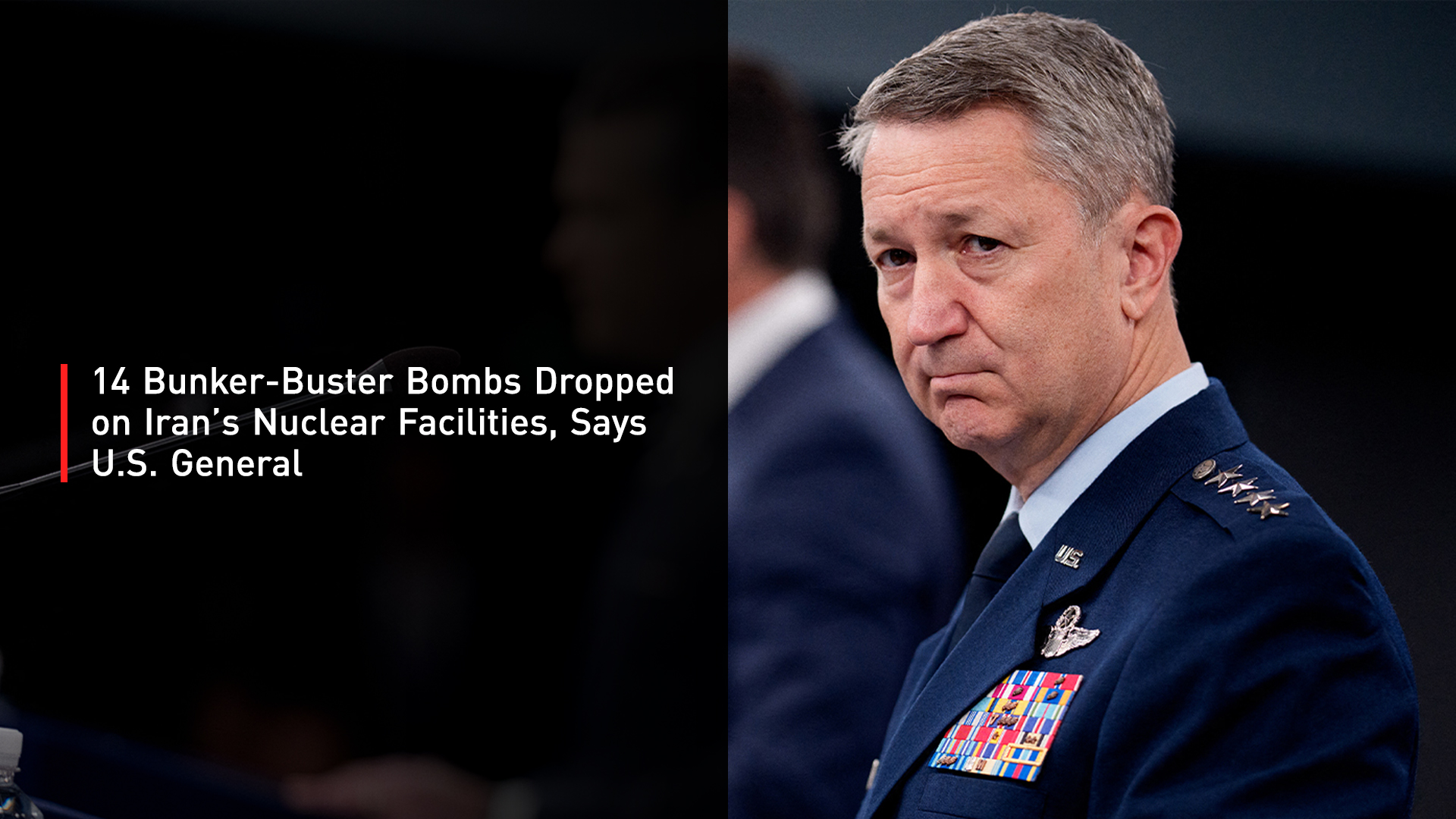U.S. Chairman of Joint Chiefs Details "Operation Midnight Hammer" as Largest B-2 Strike in History
Gen. Dan Caine detailed “Operation Midnight Hammer,” a high-risk U.S. strike using B-2 bombers and Tomahawk missiles to hit Iran’s nuclear sites. The mission involved 125 aircraft and 14 bunker-buster bombs, inflicting severe damage. U.S. forces remain on high alert.

By Kamaran Aziz
ERBIL (Kurdistan24) — The United States Chairman of the Joint Chiefs of Staff Air Force Gen. Dan Caine, on Sunday, delivered a detailed operational briefing on the Pentagon's recent strike against Iranian nuclear facilities, describing it as a complex and high-risk mission executed with unprecedented precision and coordination.
The mission, code-named "Operation Midnight Hammer," was ordered by President Donald J. Trump and targeted three of Iran's major nuclear facilities: Fordow, Natanz, and Esfahan. Speaking at the Pentagon alongside U.S. Secretary of Defense Pete Hegseth, General Caine emphasized that the strike was designed to “severely degrade Iran's nuclear weapons infrastructure.”
"This was a complex and high-risk mission carried out with exceptional skill and discipline by our joint force," Caine said. "Their actions reflect the highest standards of the United States Armed Forces."
According to General Caine, the operation involved coordination across multiple domains and theaters, reflecting the U.S. military’s capacity to "project power globally with speed and precision at the time and place of our nation's choosing."
Mission Details
The mission remained highly classified up until its execution. "Very few people in Washington knew the timing or nature of this plan," Caine noted.
At midnight between Friday and Saturday, a large B-2 bomber strike package launched from the Continental United States. In a deception maneuver, part of the package headed westward into the Pacific to maintain tactical surprise, while the main strike group, composed of seven B-2 Spirit bombers, quietly headed east with minimal communication.
During the 18-hour flight into the target zone, the bombers conducted multiple in-flight refuelings. "Once overland, the B-2s linked up with escort and support aircraft in a complex, tightly timed maneuver requiring exact synchronization," Caine explained.
Prior to the strike, a U.S. submarine launched over two dozen Tomahawk cruise missiles against Esfahan to degrade surface infrastructure. As the B-2s entered Iranian airspace, additional deception tactics were employed, including high-speed decoys from fourth- and fifth-generation aircraft.
"The strike package was supported by U.S. Strategic Command, U.S. Transportation Command, U.S. Cyber Command, U.S. Space Command, U.S. Space Force, and U.S. European Command," Caine added.
As the aircraft approached Fordow and Natanz, fighter jets used preemptive suppression fire to neutralize any potential surface-to-air threats. According to Caine, there were no reported shots fired at the incoming aircraft, nor any Iranian fighter jet activity.
Precision Weaponry
At approximately 6:40 p.m. EST (2:10 a.m. local Iran time), the lead B-2 bomber dropped two GBU-57 Massive Ordnance Penetrators (MOPs) on Fordow. A total of 14 MOPs were used across the operation, marking the first operational deployment of the 30,000-pound bunker-busting weapon. In total, U.S. forces deployed about 75 precision-guided weapons.
The bombings concluded by 7:05 p.m. EST, with the Tomahawk strikes on Esfahan ensuring surprise throughout. The aircraft then exited Iranian airspace unchallenged and returned to base.
Initial battle damage assessments indicate that all three nuclear sites sustained "extremely severe damage and destruction," Caine confirmed.
Scale and Historical Significance
"More than 125 U.S. aircraft participated in this mission," said Caine, including bombers, refueling tankers, fighters, ISR aircraft, and naval assets. He labeled the strike "the largest B-2 operational strike in U.S. history" and the second longest B-2 mission ever, trailing only those executed in the days following 9/11.
General Kurilla, commander of U.S. Central Command, had preemptively elevated force protection measures across Iraq, Syria, and the Gulf. U.S. forces remain on "high alert" and are postured to respond to any retaliatory attacks by Iran or its proxies.
"This mission demonstrates the unmatched reach, coordination, and capability of the United States military," Caine emphasized. "In just a matter of weeks, this went from strategic planning to global execution."
Operational Security and Final Remarks
General Caine praised the operational security maintained throughout the mission, calling it a key concern shared by top officials, including the President, Secretary Hegseth, and General Kurilla.
"As we stand here this morning, many assets are still airborne, and we have hundreds deployed. I ask that we keep our war fighters on their way home, and our deployed service members in our thoughts," Caine concluded.
The Pentagon's disclosure follows U.S. Defense Secretary Pete Hegseth's earlier statement that the strike had "obliterated" Iran’s nuclear ambitions and restored American deterrence in the region.
The operation is likely to mark a critical moment in an already volatile standoff with Tehran, setting the stage for possible regional and international repercussions.
